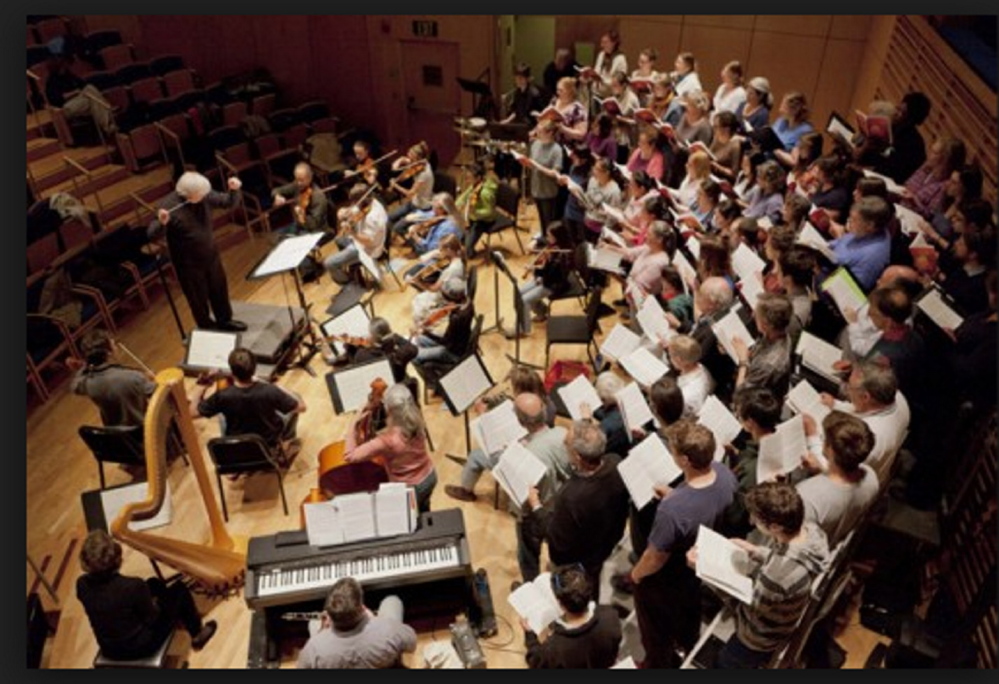After my review of the all-Bernstein program of the Portland Symphony Orchestra a few weeks ago, a friend wrote to suggest that instead of the Bernstein settings of three psalms, the powers that be should have chosen Stravinsky’s “Symphony of Psalms,” written in 1980 to commemorate the 50th anniversary of the Boston Symphony Orchestra.
The Stravinsky work was chosen by Time magazine as the best classical music of the 20th century. Time may not be the most reliable of critics, but the symphony is certainly a cut above Bernstein’s settings.
Now Maine listeners will have a chance to decide for themselves, as the Bowdoin Chorus and Mozart Mentors Orchestra, conducted by Anthony Antolini, presents two large-scale musical psalm settings by Felix Mendelssohn and Igor Stravinsky on Thursday and Friday at 7:30 p.m. in Studzinski Recital Hall on the Bowdoin campus. Best of all, it’s free.
The doors open 30 minutes before the performance, and I suggest arriving early.
Mozart Mentors Orchestra, now in its fourth concert season, was formed by Antolini and Clorinda Noyes as an ensemble to give string teachers and their most promising students an opportunity to play next to each other while accompanying large-scale choral works.
The students in the orchestra range in age from 14 to 18. Membership in the ensemble is chosen by string teachers – the mentors – from around Maine. They have already played in several well-received concerts of both traditional and contemporary music, including a memorial for the victims of the Fukushima nuclear plant disaster, a Karl Jenkins Requiem that melds the traditional text with Japanese haiku on the subject of death.
The ability of both the chorus and the orchestra with such difficult works should make for a fair comparison between the Bernstein and Stravinsky psalms.
Sung in Latin, the Stravinsky symphony is divided into three movements. Verses from Psalms 38 and 39 provide the texts for the first two, while the entire text of Psalm 150 is the triumphant theme of the rhythmical final movement. One can see why Stravinsky chose this one. It concludes (translated from the Latin Vulgate):
Praise Him upon the lute and harp.
Praise Him upon the strings and pipe.
Praise Him upon the well-tuned cymbals.
Let everything that hath breath praise the Lord.
Alleluia.
For some reason or other, Stravinsky omitted violins and violas from the orchestral score, replacing them with the voices of the choir. It will be interesting to see how Mozart Mentors and Antolini deal with that conundrum. Stravinsky intended singers and orchestra to be equal partners.
One thing that the symphony will not be is “with it,” ironic, chic or up-to-date, Bernstein’s primary stumbling blocks. Stravinsky was so devout that he pasted an image of the Crucifixion in his working score, with the inscription “Adveniat regnum tuum” – “Thy kingdom come.”
The Mendelssohn setting of Psalm 114, “When Israel Came Out of Egypt,” also will be well worth hearing. Scored for large orchestra and chorus, it is one of eight the composer wrote in the 1830s that are seldom heard today.
Mendelssohn treats the Passover subject of the psalm in the form of a small symphony with no breaks between the movements, like the Stravinsky. It was enthusiastically received by the public at its premiere but later fell into obscurity.
Christopher Hyde is a writer and musician who lives in Pownal. Contact him at: classbeat@netscape.net
Send questions/comments to the editors.



Success. Please wait for the page to reload. If the page does not reload within 5 seconds, please refresh the page.
Enter your email and password to access comments.
Hi, to comment on stories you must . This profile is in addition to your subscription and website login.
Already have a commenting profile? .
Invalid username/password.
Please check your email to confirm and complete your registration.
Only subscribers are eligible to post comments. Please subscribe or login first for digital access. Here’s why.
Use the form below to reset your password. When you've submitted your account email, we will send an email with a reset code.